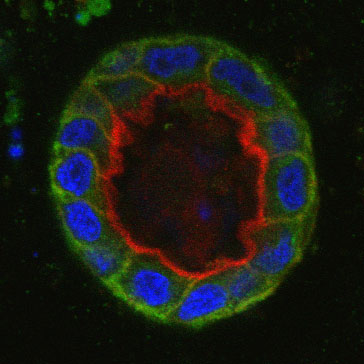 |
 |
|
Jennifer Lippincott-Schwartz |
||
NIH–NICHD |
||
301-402-1010, jlippin@helix.nih.gov |
Breakthroughs in Imaging Using Photoactivatable Fluorescent Proteins |
| Session 2, Fri. Nov-05, 15:00 |
Photoactivatable fluorescent proteins (PA-FPs) are molecules that switch to a new fluorescent state in response to activation to generate a high level of contrast. Several types of PA-FPs have been developed, including PA-FPs that fluoresce green or red, or convert from green to red in response to activating light. The optical ‘‘highlighting’’ capability of PA-FPs has led to the rise of novel imaging techniques providing important new biological insights. These range from in cellulo pulse-chase labeling for tracking subpopulations of cells, organelles or proteins under physiological settings, to super-resolution imaging of single molecules for determining intracellular protein distributions at nanometer precision. The use of PA-FPs in super-resolution imaging of single molecules is a rapidly emerging field of microscopy that improves the spatial resolution of light microscopy by over an order of magnitude (10-20 nm resolution). It is based on the controlled activation and sampling of sparse subsets of photoconvertible fluorescent molecules whose illumination centroids are fitted and then summed into a final super resolution image, revealing the complex distribution of dense populations of molecules within subcellular structures with nanometer precision. The full potential of PA-FPs in conventional, diffraction-limited and super-resolution imaging is only beginning to be realized. Here, I discuss the diverse array of PA-FPs available to researchers and the new imaging techniques they make possible for unraveling long-standing biological questions. |